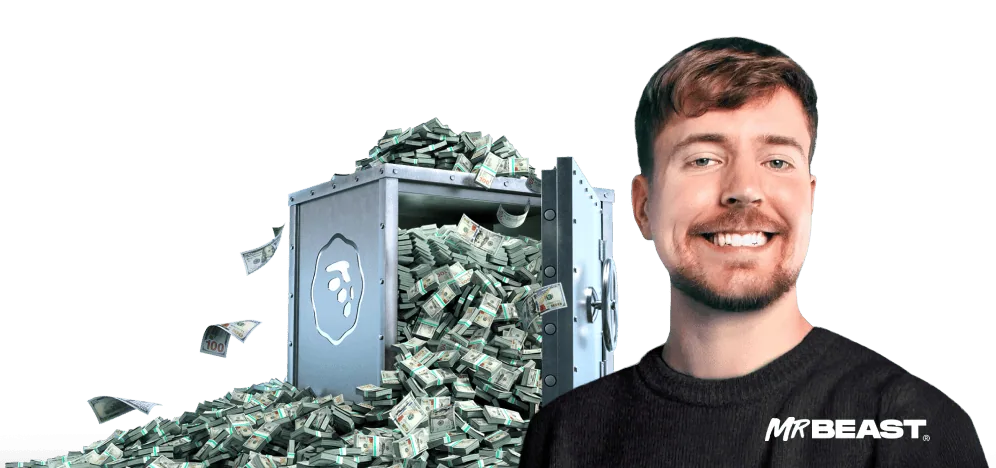Choosing between variable vs fixed-rate loans can feel like a financial gamble, but it doesn’t have to be. Whether you’re after stability or willing to take a calculated risk for potential savings, understanding the difference between fixed and variable interest rates can help you make a smarter financial decision. Let’s break it all down so you can choose the best option for your next loan.
Need a loan but not sure whether to go for a fixed interest rate or variable interest rate? MoneyLion has options for both, so you can browse with confidence, no matter your preference.
Table of contents
What is a variable interest rate loan?
A variable interest rate loan is a loan where the interest rate isn’t set in stone — it fluctuates based on market conditions. These rates are typically tied to a benchmark, like the prime rate or SOFR (Secured Overnight Financing Rate), meaning your monthly payments can change over time. When rates drop, you could save money. But if they rise, so do your payments.
Variable rate loans are common in credit cards, mortgages, and personal loans, offering both opportunities and risks.
Types of variable interest rate loans
Not all variable rate loans function the same way. Here’s how some of the most common ones work:
- Adjustable-rate mortgage (ARM): Instead of locking in one rate for the life of the loan, an ARM starts with a low introductory rate for a set period (e.g., 5 years), then adjusts periodically based on market rates. This can be a great deal — unless rates rise sharply when your fixed period ends.
- Variable rate personal loans: Some personal loans have variable interest rates that shift with the market, making them attractive when rates are low. However, they can also make budgeting trickier since your payment amount isn’t guaranteed to stay the same.
How do variable interest rates work?
Variable interest rates change based on economic conditions. When the Federal Reserve adjusts interest rates, banks and lenders follow suit, increasing or decreasing rates on loans tied to market benchmarks. This means your monthly payment can go up or down depending on broader economic trends.
How often do variable rates change?
The frequency of variable interest rate changes depends on your loan terms. Some loans adjust monthly, quarterly, or annually, while others have longer fixed periods before rates start fluctuating. These changes are usually triggered by broader economic shifts—like when the Federal Reserve adjusts interest rates. That means your payments could go up, down, or stay put multiple times throughout the life of your loan, making budgeting a bit of a moving target.
Variable rate loan pros and cons
Variable interest rates have pros and cons, so weigh both sides before committing to variable rates vs fixed rates:
| Pros | Cons |
| Variable rate loans often start with lower rates than fixed interest rate loans, offering short-term savings. | If interest rates increase, your payments could rise significantly. |
| If interest rates drop, your payments could decrease. | Fluctuating payments make it harder to plan long-term. |
| Some variable rate loans allow prepayment or refinancing if rates become unfavorable. | A low starting rate might not last, leading to higher costs over time. |
What is a fixed-interest rate loan?
A fixed interest rate loan locks in your interest rate for the entire loan term, meaning your monthly payment stays the same no matter what happens in the economy. This predictability makes it a popular choice for mortgages, auto loans, and personal loans.
Types of fixed rate loans
Fixed interest rate loans are ideal for borrowers who need a little consistency in their life. Here’s how some of the most common ones work:
- Most auto loans: The vast majority of car loans have fixed interest rates, ensuring your payment never changes.
- Home equity loans: Unlike HELOCs (home equity lines of credit), which often have variable interest rates, home equity loans typically offer fixed interest rates, making them a stable choice for large expenses.
- Most personal loans: Many personal loans come with fixed interest rates, so your monthly payment remains predictable, making budgeting easier.
Can a fixed interest rate change?
In most cases, no. However, some loans offer hybrid structures — such as 5/1 ARMs, which start with a fixed interest rate before transitioning to a variable interest rate. As always, read the fine print to understand whether your rate could change later.
Fixed-rate loan pros and cons
Here are some benefits and drawbacks to keep in mind when you’re weighing a fixed interest rate vs variable interest rate:
| Pros | Cons |
| Budgeting is easier when your loan payment stays the same. | Fixed interest rate loans typically begin with higher rates than variable rate loans. |
| If interest rates spike, your loan isn’t affected. | You won’t benefit if interest rates decline after you lock in. |
| Fixed interest rates are ideal for long-term financial planning. | Fixed interest rates don’t adjust to market conditions. |
Variable rate vs. fixed rate: Which is better?
There’s no universal “best” option — choosing between a fixed rate vs variable rate depends on your financial goals, market trends, and how much risk you’re willing to take. With the Federal Reserve adjusting interest rates, borrowing costs could shift, making this decision even more important. Here’s what to consider before you commit:
✅ Interest rate stability: If you value predictability, a fixed interest rate locks in your payments for the entire loan term. If you’re cool with some fluctuation (and potential savings), a variable interest rate follows market trends, which could mean lower payments upfront — but also uncertainty.
✅ Timing of interest rate changes: Variable rates can change monthly, quarterly, or annually, depending on the loan. If you’re planning to pay off the loan quickly, you might benefit from a variable interest rate before potential hikes kick in.
✅ Loan term: Short-term loans often pair well with variable rates, as you can take advantage of lower starting costs. If you’re in it for the long haul — like with a mortgage — a fixed interest rate offers long-term peace of mind.
✅ Risk tolerance: Do you like to gamble? A variable rate loan might be worth it if you can handle shifting payments. But if you’d rather keep things predictable and stress-free, a fixed interest rate ensures stability.
✅ Current and projected interest rate environment: If rates are expected to rise, locking in a fixed rate now could save you from higher payments later. But if experts predict a rate drop, a variable rate loan could help you capitalize on lower costs over time.
✅ Overall cost: Variable interest rates start lower than fixed rates, but if the market turns against you, they can climb — potentially making them more expensive. A fixed rate might cost more initially, but it guarantees no surprises.
Should you choose between variable vs fixed rates?
Your choice of variable vs fixed rate should factor in market conditions, your financial stability, and how long you plan to keep the loan. With the Federal Reserve adjusting interest rates, borrowing costs may shift, making the decision even more crucial.
- If you want predictability and long-term stability, a fixed Annual Percentage Rate (APR) vs variable APR decision leans toward fixed APR.
- If you’re comfortable with some risk and want potential savings, a variable APR could work in your favor.
- If you’re still unsure, consulting a financial advisor can help you weigh the pros and cons based on your specific goals.
Lock It in or Roll the Dice? The Final Verdict on Interest Rates
Choosing between fixed vs variable interest rates isn’t just about numbers — it’s about strategy. A fixed interest rate can be your best bet if you love stability and predictability. But if you’re willing to ride the interest rate rollercoaster for potential savings, a variable interest rate might work in your favor.
No matter which path you choose, the key is understanding your loan terms, risk tolerance, and financial goals. Need a loan with the right rate for you? MoneyLion has options to fit your needs — whether fixed or variable.
FAQs
What is the danger of taking a variable-rate loan?
Variable rate loans fluctuate, meaning your monthly payment could increase unexpectedly, making budgeting more difficult.
Is a personal loan from the bank variable or fixed rate?
Depends. Many banks offer fixed-rate personal loans, but some lenders provide variable rate loan options.
Is a credit card a variable or fixed rate?
Most credit cards have variable interest rates that change based on the prime rate.
Are mortgages fixed or variable?
Both exist. Fixed-rate mortgages offer consistent payments, while adjustable-rate mortgages (ARMs) fluctuate with the market.
Is a student loan fixed or variable?
Federal student loans usually have fixed interest rates, while private student loans may offer either fixed or variable interest rates.
Are personal loans fixed or variable?
Most personal loans have fixed interest rates, but variable rate loans exist depending on the lender.















